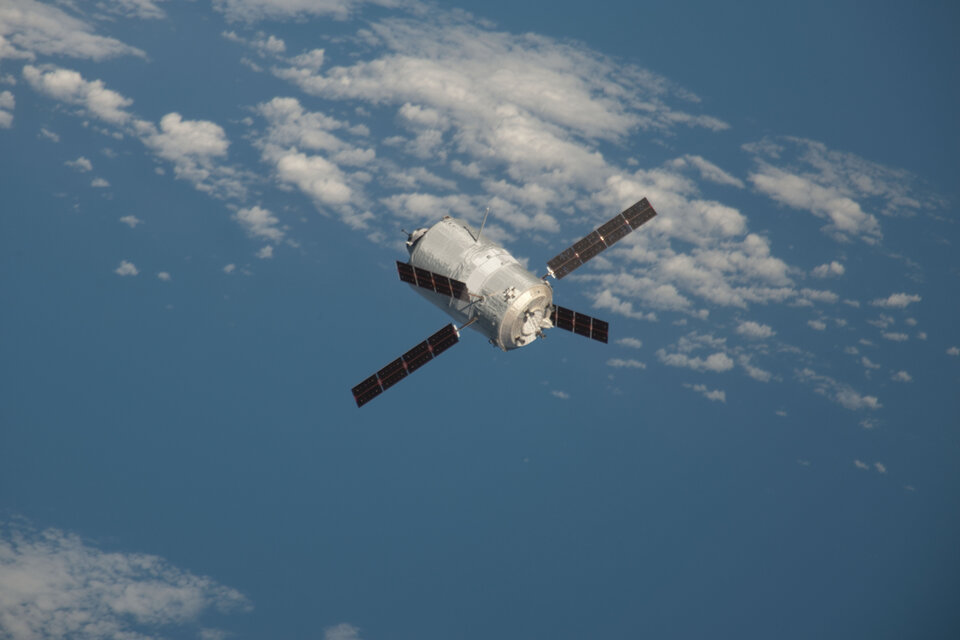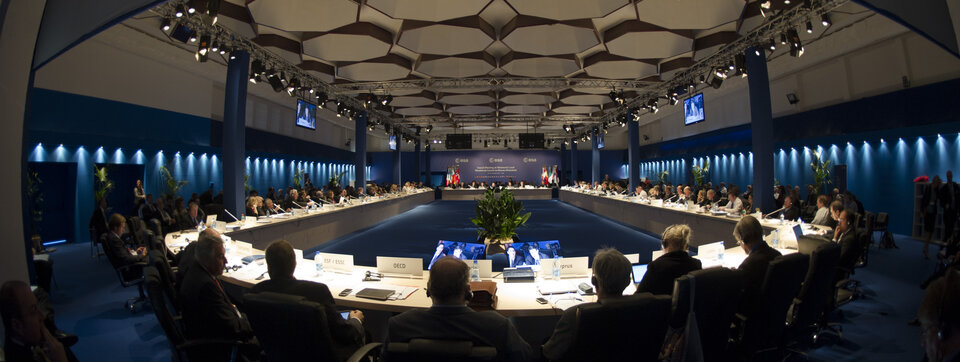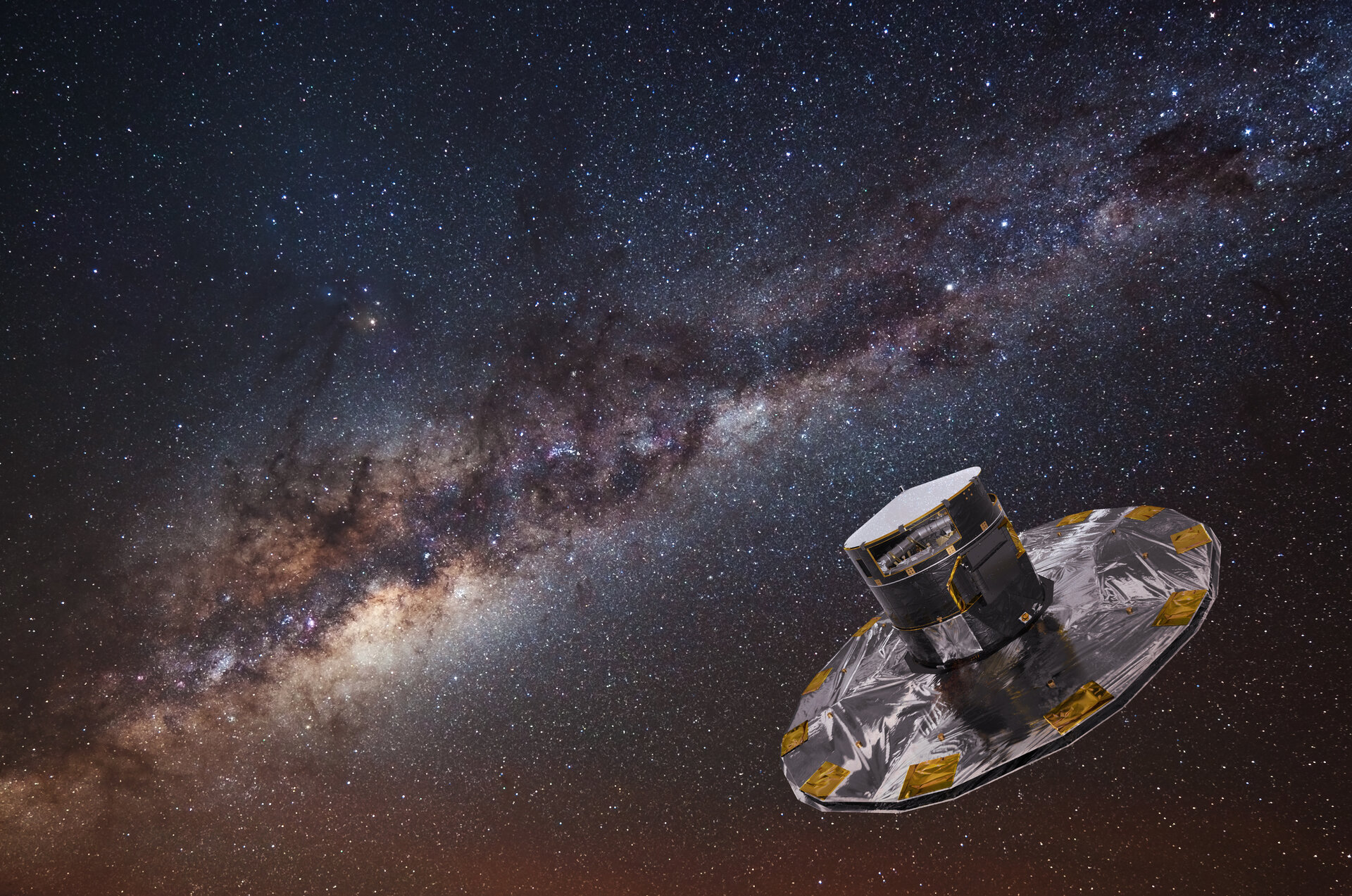Satellite states
ESA Director General Jean-Jacques Dordain highlights the importance of investing in the space sector to stimulate competitiveness and growth in Europe…
Europe's space ministers committed over €10bn to new investments in Europe's future in space last November. Representing the 20 member states of the European Space Agency (ESA), as well as Canada, the ministers met in Naples on 20th and 21st November to set Europe's objectives and priorities in space for the coming years. The decisions taken (following on from the ministerial council meeting in The Hague in 2008, when almost €10bn was similarly agreed in worsening economic conditions), are testimony to a far-ranging conviction that space is a catalyst for growth, innovation and knowledge for the benefit of citizens.
In the last 40 years, ESA has demonstrated the scientific and economic returns that can be achieved by investing in space technologies and infrastructure. The Organisation for Economic Co-operation and Development (OECD) has recently measured the economic and societal value of this investment: publicly funded research and development in space results in national multiplier effects ranging from 1.4 to 4.9, with even higher multiplier effects on employment materialising in hundreds of highly skilled workplaces. These jobs are located in Europe and have not been delocalised overseas. In times of economic difficulties and challenges it was important that ministers could make the right investments in the right areas, in order to maximise the economic value of space and generate further growth and innovation in Europe.

A balanced set of investments
The new investments stemming from the ministerial meeting were carefully balanced among three complementary strategic objectives: pushing the frontiers of knowledge; supporting an innovative and competitive Europe; and enabling space-based services.
Pushing the frontiers of knowledge
The first objective is achieved thanks to a smart combination of mandatory activities within ESA's scientific programme (exploring the solar system and the universe) and optional activities that take into account Earth sciences for the increased understanding of our planet (the fourth part of the Earth Observation Envelope Programme), the science coming from the exploitation of the International Space Station and the space exploration programme to allow Europe to take part in humankind's ambitious future adventures of discovery and innovation.
Supporting an innovative and competitive Europe
The second objective involves substantial investments in telecommunications, launchers, technology research and technology transfer. The investments in telecommunications are complemented though partnerships mostly with private partners (industry and operators). Telecommunications is the primary commercial field of space activities, and public private partnerships (PPPs) are the basis for the development of the next generation platforms, including satellites fully operated by electric propulsion.
Another main objective was to properly manage the evolution of the launcher sector within the next decade. Today, European launch services are the most reliable in the world, but, economically speaking, they operate in a commercial market where competitors are heavily supported by a guaranteed governmental market. To meet this challenge, ministers have agreed to run detailed definition studies for the new Ariane 6 in order to receive industrial offers in 2014 with the aim of a maiden flight in 2021, and to continue the development of an adapted version of Ariane 5, the Mid-life Evolution, to increase the competitiveness of the current model by 2018 at the latest. Final decisions on the two programmes will be taken in 2014. Finally, Europe's edge in world markets will be supported via the technology programmes that are interlinked with all other programmes.
Enabling services
The level of investment allocated for the third objective has been (at least) doubled through partnerships with Eumetsat and the EU. The aim is to maximise the social and economic benefits deriving from satellites, in particular though programmes such as Meteosat Second Generation in the field of meteorology, IRIS for safe communications in air traffic management and SAT-AIS, which deals with vessel identification for maritime surveillance. The European Global Navigation Satellite System Evolution Programme – where the second generation of Galileo will be prepared – and third phase of the space component of the EU-ESA GMES/Copernicus programme in the field of Earth observation for environment and security, are also contemplated as an ESA contribution to the two EU flagship programmes.

Increasing efficiency and effectiveness
At the Naples Ministerial Council, member states also approved a political declaration on moving 'towards the European Space Agency that best serves Europe', initiating a process to define how ESA can adapt its operations to take advantage of both its intergovernmental framework and the EU commitment to harnessing the potential of satellite systems. The ministers have also stated their willingness to ensure coordination and coherence between the process initiated on the ESA side and the one initiated on the EU side. This political declaration was also supported by ministers from all of the EU member states that are not yet members of ESA, who were present at the meeting as observers.
ESA must continuously strive to further improve its efficiency in order, above all, to contribute to the effectiveness of the European space sector overall. This sector has become increasingly complex because of the widening scope of space activities, the evolution of European governance (in particular with respect to the implementation of the Lisbon Treaty that has clarified the EU's competence in space matters), and the emergence of new public and private actors, both in Europe and abroad. The European space sector also has to operate within a fast-changing world, competing in some areas while cooperating in others. European public investment in space is low compared to other space powers, so governments rely on European industry being even more competitive than the US and others in the commercial market.
Thus it is now essential to streamline investments, maximising their efficacy and avoiding duplications while making the most of existing capabilities. ESA has frequently adapted to move with the times and is ready to further evolve so that it remains the one collective framework through which European space programmes are successfully realised. In Naples, ministers were invited to provide guidance in order to determine the direction of ESA's future relationship with the EU and help develop the space agency that best serves Europe, member states and the EU; providing the most appropriate framework in which to develop space capabilities and resources at European level for R&D. An essential element of the increased efficiency of ESA will be achieved thanks to even closer and better coordinated relations between ESA and European industry, always with the goal of contributing to an improved European competitiveness in space.

Achievements
The decisions taken by ministers last November could build on a number of successes in space achieved by ESA, its member states, researchers, industry and other stakeholders since the previous council at ministerial level in 2008.
These successes can be summarised as follows:
- 14 new spacecraft launched, including two Automated Transfer Vehicles (ATVs) to the International Space Station;
- 25 commercial launches of Ariane 5 from the European spaceport in French Guiana, the first three Soyuz launches from the Guiana Space Centre (CSG) and the maiden flight of the new small launcher Vega, all successful;
- Four major PPPs developed in telecommunications that have contributed to the success of European industry on the worldwide commercial market;
- Six Business Incubator Centres that have generated more than 1,000 new highly qualified jobs;
- Four astronauts working on board the International Space Station.
ESA has been further strengthened by the accession of two new member states, Romania and Poland. In the case of Poland, membership was ratified by the unanimous decisions of both chambers in the parliament.
2013 will also be rich in activities and events, with 12 satellites planned for launch in seven separate missions, utilising all three of Europe's launchers. In spring, the launch of Proba-V (vegetation) will take place on a Vega launcher from the Guiana Space Centre, and around the same time, from Plesetsk, the multi-satellite mission Swarm will commence, to study the magnetic field of the Earth. An Ariane 5 will then carry the fourth ATV, named after Albert Einstein, to the International Space Station to deliver supplies for the crew (food, drinking water, oxygen etc.), experiments and three tons of propellants to boost the station's orbit at regular intervals. In May, ESA astronaut Luca Parmitano, from Italy, will fly to the ISS on a long duration mission until November. He will be the first of the next generation of six astronauts selected in 2009.
During the summer, an Ariane 5 will carry into orbit the Alphasat mission, a PPP between ESA and Inmarsat. ESA is providing the first flight model of the new Alphabus platform to allow European industry to significantly extend their telecommunications satellite range, providing a new high power multipurpose platform.
In the second half of 2013, the first member of the new family of satellites of the EC's Global Monitoring for Environment and Security (GMES) programme will be launched, as Sentinel-1 takes off on a Soyuz launcher from the Guiana Space Centre. Later this year, another Soyuz from the CSG will carry an amazing scientific satellite, Gaia, to chart and understand the evolution of our home galaxy, the Milky Way.
Last but not least, following the In Orbit Validation (IOV) phase (four satellites already in orbit that are used to qualify the Galileo space, ground and user segments through extensive testing), the first Full Operational Capability (FOC) satellites of the Galileo constellation will also be launched in 2013, with two FOC launches planned, each on a Soyuz launcher with two satellites each.
ESA does not just develop and launch satellites for the purpose of demonstrating the amazing technical capacities of European industry. The exploitation of our spacecraft by the space communities is the ultimate goal of all of our missions. International conferences will be held in 2013 to highlight the results of spacecraft already in orbit, such as SMOS, launched in 2009 to study soil moisture and ocean salinity, and Planck, also launched in 2009 to help describe the birth of the universe and its evolution. These will take place in the first part of the year, while in early September hundreds of scientists will present and learn about the results of ESA Earth Observation missions for Earth's environment and climate at the 'Living Planet Symposium' held in Edinburgh from 9th-13th September. The decisions taken last November will ensure that such events continue to be a highpoint of the scientific calendar for many years to come.




